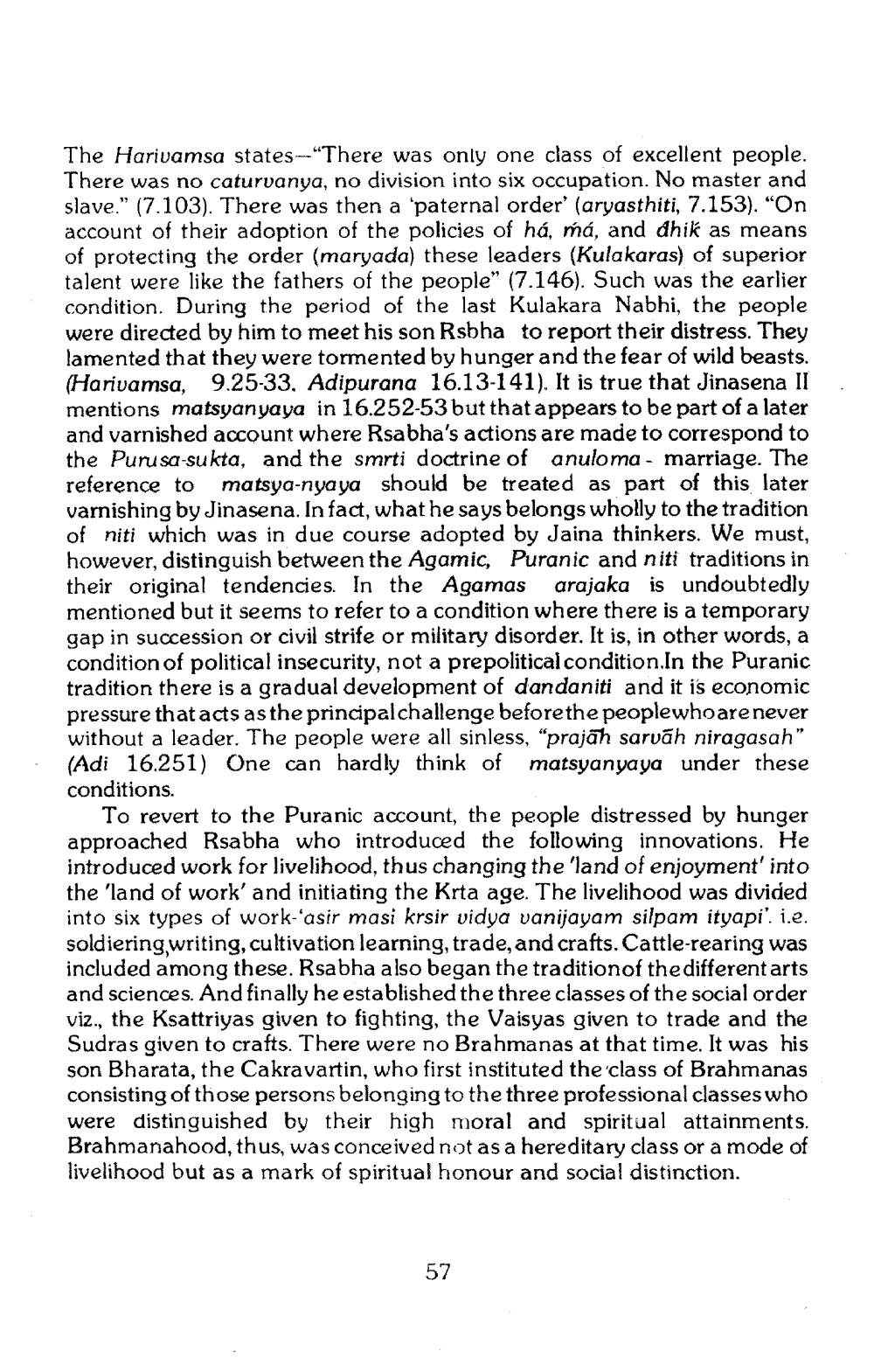________________
The Harivamsa states-“There was only one class of excellent people. There was no caturvanya, no division into six occupation. No master and slave." (7.103). There was then a 'paternal order' (aryasthiti, 7.153). "On account of their adoption of the policies of há, má, and dhik as means of protecting the order (maryada) these leaders (Kulakaras) of superior talent were like the fathers of the people" (7.146). Such was the earlier condition. During the period of the last Kulakara Nabhi, the people were directed by him to meet his son Rsbha to report their distress. They lamented that they were tormented by hunger and the tear of wild beasts. (Harivamsa, 9.25-33, Adipurana 16.13-141). It is true that Jinasena II mentions matsyan yaya in 16.252-53 but that appears to be part of a later and varnished account where Rsabha's actions are made to correspond to the Purusa-sukta, and the smrti doctrine of anuloma - marriage. The reference to matsya-nyaya should be treated as part of this later varnishing by Jinasena. In fact, what he says belongs wholly to the tradition of niti which was in due course adopted by Jaina thinkers. We must, however, distinguish between the Agamic, Puranic and niti traditions in their original tendencies. In the Agamas arajaka is undoubtedly mentioned but it seems to refer to a condition where there is a temporary gap in succession or civil strite or military disorder. It is, in other words, a condition of political insecurity, not a prepolitical condition. In the Puranic tradition there is a gradual development of dandaniti and it is economic pressure that acts as the principalchallenge before the peoplewho are never without a leader. The people were all sinless, "prajah sarvah niragasah" (Adi 16.251) One can hardly think of matsyanyaya under these conditions.
To revert to the Puranic account, the people distressed by hunger approached Rsabha who introduced the following innovations. He introduced work for livelihood, thus changing the 'land of enjoyment' into the 'land of work and initiating the Krta age. The livelihood was divided into six types of work-'asir masi krsir vidya vanijayam silpam ityapi'. i.e. soldiering, writing, cultivation learning, trade, and crafts. Cattle-rearing was included among these. Rsabha also began the traditionof the different arts and sciences. And finally he established the three classes of the social order viz., the Ksattriyas given to fighting, the Vaisyas given to trade and the Sudras given to crafts. There were no Brahmanas at that time. It was his son Bharata, the Cakravartin, who first instituted the class of Brahmanas consisting of those persons belonging to the three professional classes who were distinguished by their high moral and spiritual attainments. Brahmanahood, thus, was conceived not as a hereditary class or a mode of livelihood but as a mark of spiritual honour and social distinction.
57




